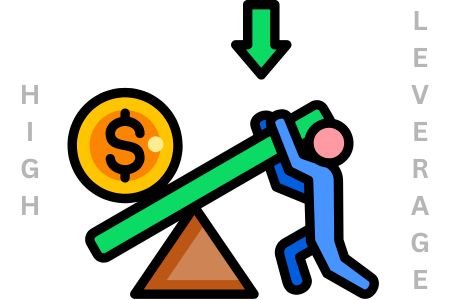High leverage remains one of the most sought-after features in forex trading, especially among retail traders looking to grow small accounts quickly. The promise is simple: use borrowed capital to control larger positions and potentially amplify returns. But behind that promise lies a mix of risk, regulation, and marketing. Not all brokers offer high leverage, and those that do often operate outside the world’s strictest regulatory environments.
Leverage is limited under top-tier financial regulators, which is why many brokers choose offshore licenses instead. Traders should carefully consider the risks before using high leverage. While it offers flexibility and the potential for faster growth, it can also result in rapid losses, especially for those who lack experience or a solid risk management plan.

Key Points to Consider When Choosing a High Leverage Forex Broker
Why Top Regulators Don’t Allow High Leverage
Brokers regulated by Tier-1 authorities such as the UK’s Financial Conduct Authority (FCA), the Australian Securities and Investments Commission (ASIC), and the European Securities and Markets Authority (ESMA)are not allowed to offer high leverage to retail traders. In fact, these regulators impose strict caps on leverage levels, effectively making high leverage unavailable under their supervision.
Here’s how leverage is typically limited under Tier-1 regulations:
| Asset Class | Max Leverage (FCA/ASIC/ESMA) |
|---|---|
| Major Forex Pairs | 30:1 |
| Minor/Exotic Forex Pairs | 20:1 |
| Major Indices | 20:1 |
| Gold | 20:1 |
| Other Commodities | 10:1 |
| Individual Stocks | 5:1 |
| Cryptocurrencies | 2:1 |
These rules are designed to limit potential losses among retail clients, particularly those who may not fully understand the risks that come with margin trading. While this protects less experienced traders, it also restricts more advanced traders who are confident in managing risk.
This is where offshore jurisdictions come in.
Brokers registered in less restrictive regions like Seychelles, St. Vincent and the Grenadines, Belize, or the British Virgin Islands face fewer limitations. As a result, they can offer leverage up to 500:1 or even 1000:1 in some cases.
It’s not that these brokers are necessarily trying to evade oversight. Rather, they’re targeting a specific type of trader, someone who actively wants high leverage and is willing to trade through a regulatory framework that offers fewer protections in return for greater flexibility.
Why So Many Brokers Choose Offshore Licensing
There’s a reason brokers operating under Tier-2 or offshore licenses outnumber those sticking strictly to FCA or ASIC guidelines. High leverage is attractive, and traders demand it, especially in regions where account sizes are smaller, and margin efficiency becomes a deciding factor.
Offshore brokers can:
- Offer leverage up to 1000:1
- Skip rigid margin close-out rules
- Avoid mandatory negative balance protection in some cases
- Run promotional bonuses and flexible account types
From a business standpoint, it makes sense. These brokers can appeal to a broader audience, especially in Africa, Asia, Latin America, and parts of Eastern Europe by removing the barriers that come with tight regulation.
But of course, there’s a trade-off.
Pros and Cons of High Leverage
Pros/Cons
Pros/Cons
Is High Leverage Always a Red Flag?
Not necessarily. The key is understanding who the broker is, how they’re regulated, and what protections are in place. Some reputable brokers maintain both a Tier-1 license and an offshore registration. In these cases, they might limit leverage on their EU or UK entity but offer higher leverage via their offshore branch.
Traders must read the fine print. Just because a broker offers 1000:1 leverage doesn’t mean they’re automatically unsafe, but it does mean the onus is on you to evaluate their credibility, execution quality, withdrawal process, and support.
Due diligence matters even more when oversight is light.
What to Look for in a High Leverage Broker
If you’re considering a high leverage broker, ask the following:
Should You Choose a High Leverage Broker?
High leverage can be a powerful tool in the right hands, offering the opportunity to grow smaller accounts and engage in more dynamic strategies. But it also brings considerable risk. It’s not just about multiplying gains — it’s about being prepared for the losses that can come just as fast, or faster.
The reality is simple: no serious regulator allows high leverage for retail clients anymore. If you’re trading with a broker offering 500:1 or even 1000:1, it’s almost certain they’re operating offshore or under lighter regulation. That doesn’t automatically mean they’re untrustworthy, but it does mean you’re largely on your own when it comes to risk controls.
If you’re experienced, disciplined, and fully aware of the risks, high leverage can make sense. But if you’re still figuring out position sizing, stop-losses, and market behavior — it’s better to build skills first.
So, should you choose a high leverage broker? Only if you’re choosing it for the right reasons. Know the risks, protect your capital, and never let leverage become the reason you blow up your account.

